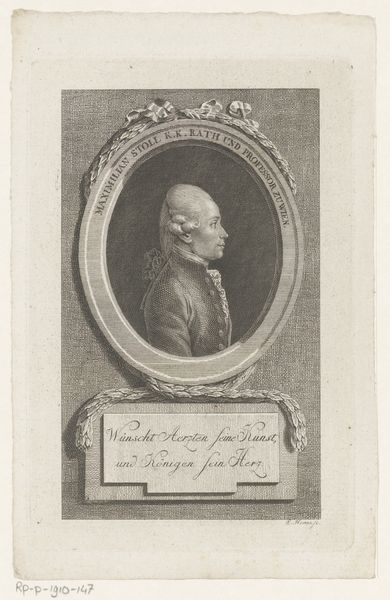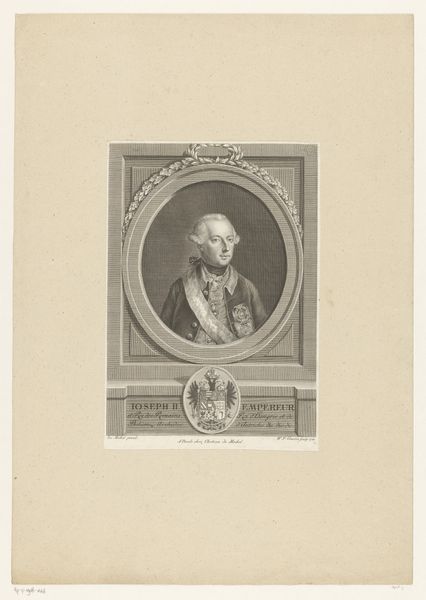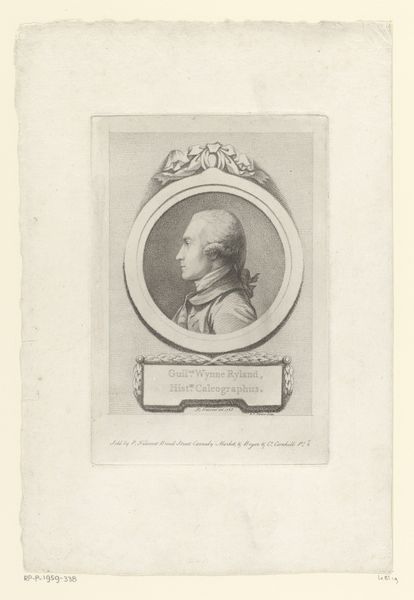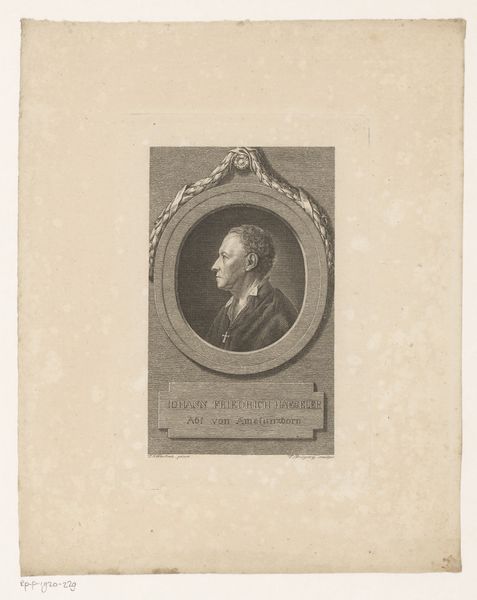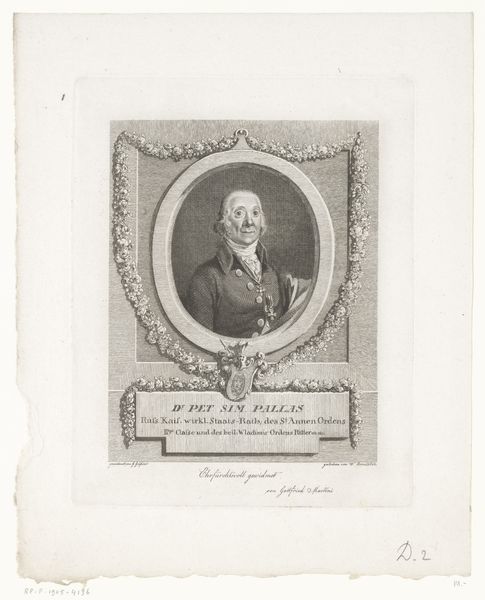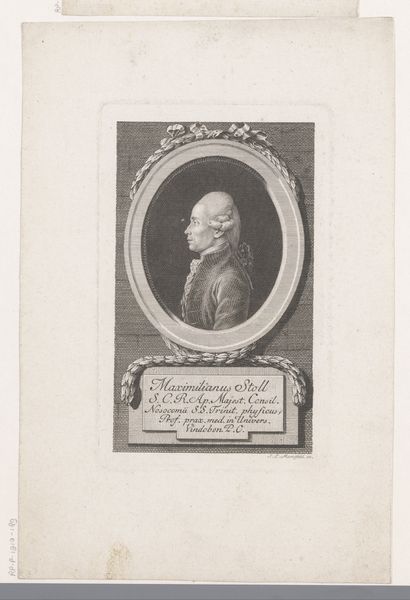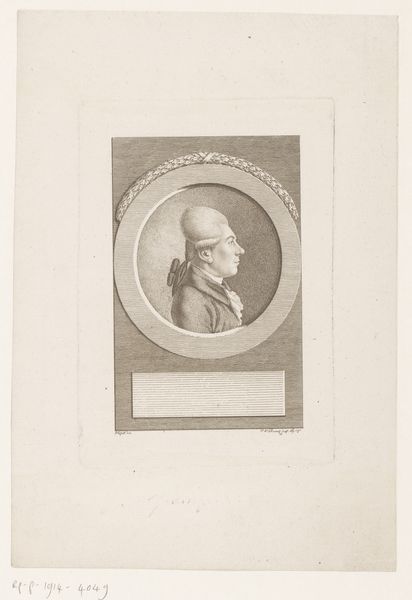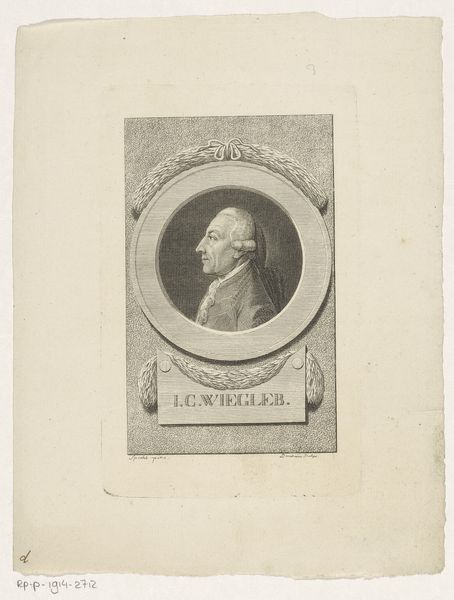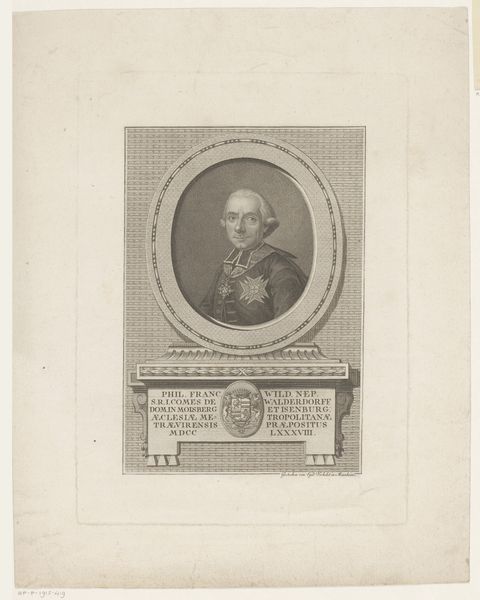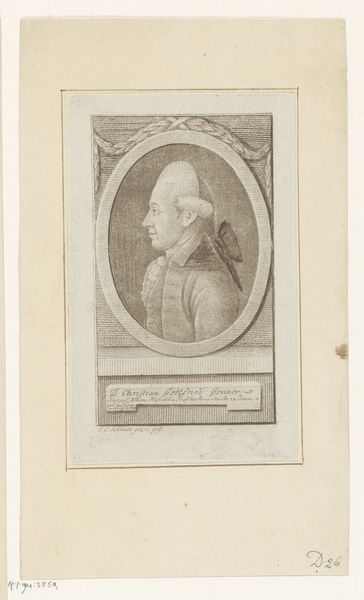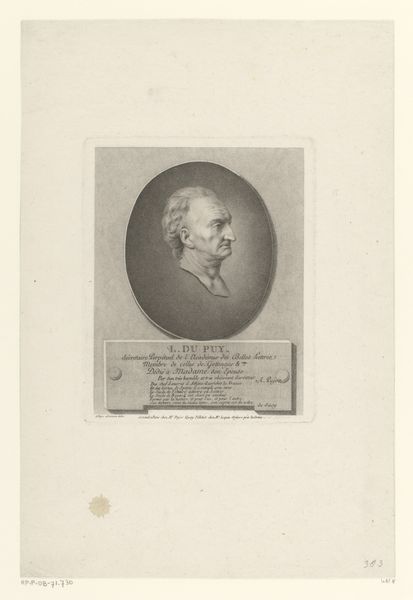
paper, graphite, engraving
#
portrait
#
neoclacissism
#
paper
#
line
#
graphite
#
history-painting
#
academic-art
#
engraving
Dimensions: height 164 mm, width 102 mm
Copyright: Rijks Museum: Open Domain
Curator: This rather austere image is a portrait of Abraham Gotthelf Kaestner, created around 1771-72 by Johann David Schleuen the First. It's an engraving, a meticulously rendered line portrait on paper, residing here at the Rijksmuseum. Editor: Oh, there's something immediately so proper about it, isn’t there? That stiff neck! That slightly pursed mouth… like he’s eternally displeased by a draft in the room. It gives off serious eighteenth-century intellectual energy, doesn’t it? Curator: Indeed. Schleuen captures Kaestner, the German mathematician, in that very mode. The neoclassical style is very prominent in its celebration of rationalism. Everything is so neat, composed. It reflects the Age of Enlightenment. Editor: You know, seeing this, I’m thinking about the constraints of representation itself. This portrait, carefully commissioned, carefully posed—it tells us as much about how Kaestner *wanted* to be seen as it does about who he truly was. That's power. Curator: It's true; the portrait served as a kind of status marker. Engravings such as these allowed for wider circulation. Kaestner could control his image, distributing it among peers, projecting an image of intellect. There's a political dimension, of course, it always reflects who held power, but also who was excluded, or marginalized from the same visual landscape. Editor: Absolutely! This also makes me think about who gets to be remembered, and how. Portraits like this were often reserved for men of science and letters – solidifying a certain narrative that is very gendered. We might ask what the portrait tells us, but maybe we can ask what it obscures. Curator: A very crucial point. I find the starkness of the line, though—the sheer minimalism— compelling. It's so far removed from our own image-saturated world; it invites a pause, a meditation. A different type of relationship, even reverence of what an image can communicate. Editor: Precisely, a curated construction, and our job now is to critically engage with it. I do think this exercise sharpens our abilities of interpretation, not just of art, but also media that influences our modern lives today. Curator: Yes, indeed! Let’s step back, then, armed with our newfound perspectives. There’s still a world of stories to unearth here in other galleries.
Comments
No comments
Be the first to comment and join the conversation on the ultimate creative platform.
